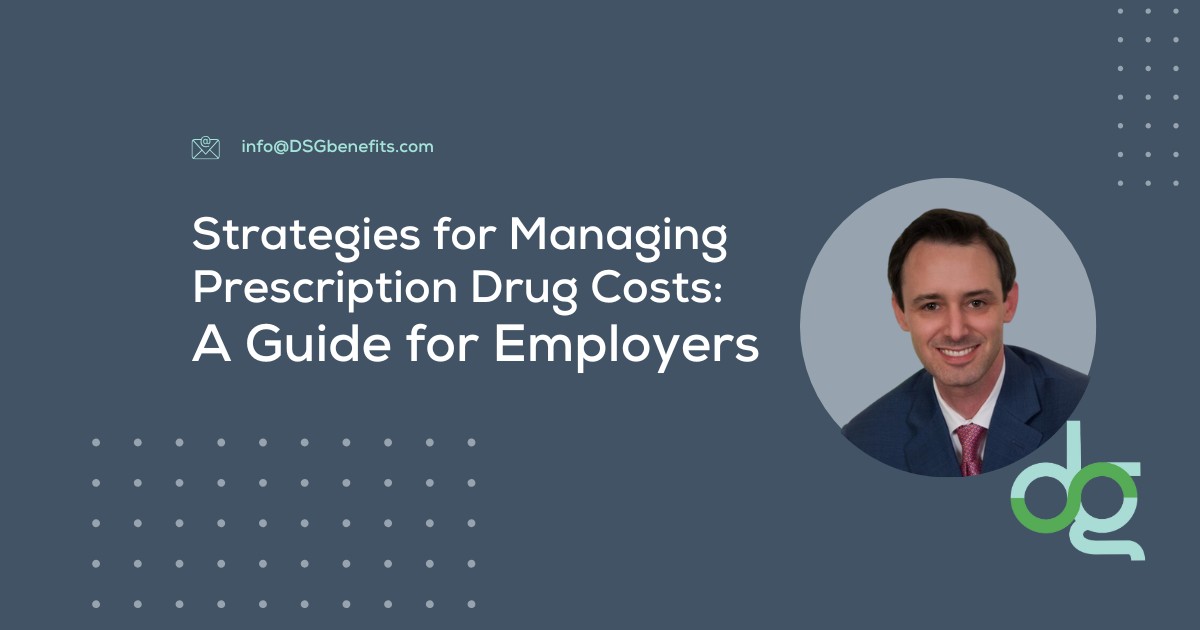As an employer offering health benefits, you want to provide valuable coverage that supports your employees’ well-being. But as prescription drug prices continue to rise, it becomes increasingly challenging to manage those costs—both for your business and your employees. Balancing affordability with comprehensive coverage is no easy task, and rising prescription costs are a pain point for everyone involved.
When your employees struggle to afford their medications, it can impact their health and job performance. Employees may skip doses or avoid refills, leading to poor health outcomes that can affect productivity and increase absenteeism.
From a financial perspective, high drug prices drive up the overall cost of your health plan, resulting in higher premiums for both your company and your workforce.
Managing these rising costs is critical to maintaining a sustainable benefits package that employees value.
Proven Strategies to Manage Prescription Drug Costs
Here are several strategies you can implement to help manage prescription drug costs within your health plan:
1. Review and Optimize Your Formulary
Work with your broker, pharmacy benefits manager, and insurance carrier to regularly review your plan’s formulary—the list of covered medications. Ensure that it prioritizes cost-effective, clinically-proven drugs, including generics and biosimilars where appropriate. By steering employees toward lower-cost, effective alternatives, you can reduce overall drug spending without compromising care.
2. Promote the Use of Generics and Therapeutic Alternatives
Encourage your employees to ask their doctor about generic medications or lower-cost therapeutic alternatives. Offering clear communication about these options—and potentially adjusting copayments to incentivize their use—can significantly reduce costs for both the employee and the health plan.
3. Leverage Pharmacy Benefit Managers (PBMs)
A great Pharmacy Benefit Manager (PBM) can help you negotiate better drug prices by leveraging their purchasing power. Work with a PBM that focuses on transparency and cost containment, ensuring they pass along rebates and savings directly to your plan.
4. Offer a Mail-Order Pharmacy Option
For maintenance medications, offering a mail-order pharmacy option can save money by providing longer supplies at lower prices. Mail-order pharmacies often offer better pricing than retail pharmacies, and your employees will appreciate the convenience of receiving medications directly at home.
5. Promote Discount Programs and Assistance Services
Educate employees about prescription discount cards, manufacturer coupons, and patient assistance programs that can help lower the cost of their medications. By simply being aware of these resources, employees may find they can afford medications that were previously too expensive.
6. Wellness and Preventive Care Initiatives
Proactive management of chronic conditions can lead to lower prescription drug spending. Consider offering wellness programs, care navigation, or chronic condition management services that help employees maintain their health and avoid costly complications. These initiatives can reduce reliance on expensive medications down the line.
Payoff: Healthier Employees and Controlled Plan Costs
By taking a proactive approach to managing prescription drug costs, you’re not just providing a benefit—you’re investing in the long-term health and success of your workforce.
Healthier employees are more engaged, productive, and likely to stay with your company, reducing turnover costs and absenteeism. At the same time, actively managing your prescription drug spend keeps your health plan more affordable for both you and your employees, ensuring you can continue to offer valuable benefits without breaking the bank.

